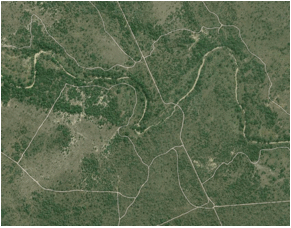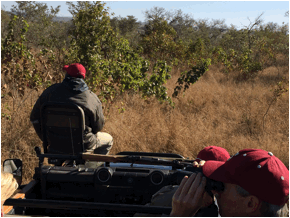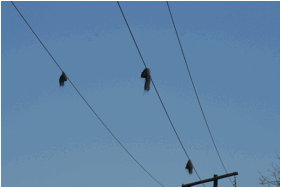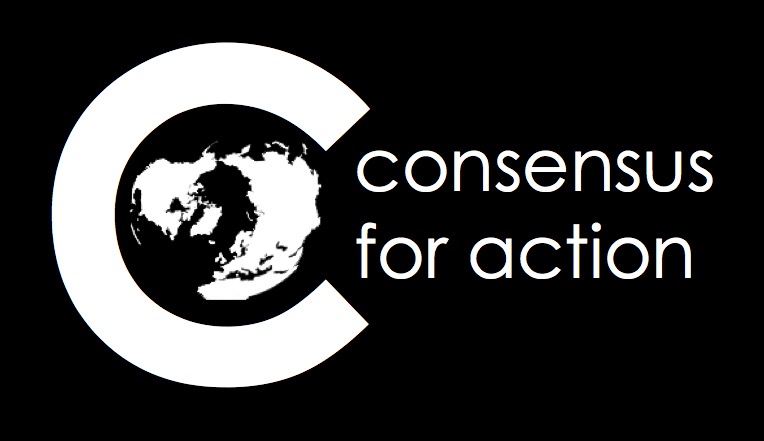By Anthony D. Barnosky, Professor in the Department of Integative Biology, Curator in the Museum of Paleontology, and Research Paleoecologist in the Museum of Vertebrate Zoology at the University of California, Berkeley. His new book Dodging Extinction: Power, Food, Money, and the Future of Life on Earth (University of California Press, Fall 2014) explores in more detail how people can keep wild species and wild places on Earth.
All the Same to the Weaver Birds
(This is the second of six blogs about my reflections on wild places and wild species—what they are and why they are important—written as I traveled through parts of Africa this past summer.)
We walk without talking, heading upwind. Safer that way, because you can smell the rhinos, the elephants, the lions before they smell you. The breeze is our friend, and it's talking to me, filling my world like the exhale of a lover, except it goes on forever. Well, not forever, because then my listening shifts to the sound we make walking on the sandy path.
Five of us, single file, I'm third in line. In the lead our guide has a slight limp, I think about why, maybe there's a story there, maybe it's just old bones, like mine. His crunches are uneven, one lasting slightly longer than the next, dit-dot, dit-dot. Just ahead of me Liz's feet follow one after the other in perfect rhythm, stitch stitch stitch, the symmetry of an athlete's walk. By some trick of acoustics, probably because we’re walking into the wind, I can't pick up the sound of my own feet as well as those ahead, and those behind are more muffled. I can't really distinguish whose are whose back there, though I know there are two people walking.
We hit the shin-high grass, and then we're all the same. Swish swish swish. We stop for a minute, and it's all about birdsong. A double cheep here, a longer caw there. Otherwise silence, except for our friend the breeze.
In the distance are a few zebra, hanging out with a few more impala. Right next to them is a telephone pole, right in front of them, a road. This is too weird. We shift direction as the wind does, keeping it in our noses, and in not too long we're on that road, crunching on the sand, leaving our tracks alongside those of the other animals.

I pulled up the google maps at six o'clock this morning, before we left on our safari, and I saw that you would be hard pressed to walk very far at all around here without crossing a dirt road (you won't see pavement), though the telephone lines and cell towers are more localized. Yet on the road, we're tracking hyaena, giraffe, rhino.
(A mongoose just ran in front of me as I sit here writing. It's checking me out, the sun highlighting it's milk-chocolate back.)
Last night, just after dark, we were heading back to camp in the land rover when over the radio came news that one group had spotted a leopard. We used the dense road network I saw on my google satellite image to hightail it over to the action. Sure enough, we caught up with the two other land rovers that had been out on patrol and saw their spotlights sweeping the dense bushes. Yep, the leopards are here—not one, but two—just went off into the thickets. We smelled their pee, no doubt about it, there were big cats nearby.
The other land rovers pulled aside to give us a shot at the action, and then, right there in our tracker's spotlight, the leopards veered back onto the road, not a care in the world. Two of them, a male and a female, going about their boy-girl business, ambling in our headlight beam, with our big diesel-belching beast ambling right behind them. Those land rovers were part of their world for sure, though I suspect that if any one of us had stepped out of the truck, we wouldn't have been part of anybody's world for too long. After a hundred yards or so, the leopards turned back into the thickets, all to the tune of land rovers ahead bushwhacking overland to hopefully intercept them for a few more camera shots.

This morning, we drove back out there. It had been a cold night and was still a cold morning, and maybe because of that the animals, like us, were pretty quiet. A few impala, a few kudu, some zebra, and from a hill top where we stopped for a thermos of coffee, a wide, wide vista clear into Kruger Park. You couldn't actually see any roads from our vantage, though I knew from my map that they were certainly snaking all through that landscape, and as I sipped my coffee I pondered once again whether I was in a wild place or not.
There's no doubt people have played with this landscape, a lot. One reason there are all those roads is because in this area there are several different privately owned game reserves, just like the one we're staying at, each butting up against the next. We stay on our game roads, they stay on theirs. I was told this morning that one guy even brought in a few tigers, hoping to turn the Big Five into the Big Six (not extinctions, thankfully, here we're talking about the Big Five animals African hunters consider the most dangerous: elephants, water buffalo, rhinos, lions, and leopards). Luckily, the tigers haven't spread.
But the signs of humanity sure have, all through these game reserves, and that's affected the animals for both good and bad. You take your choice which is which. That big fence that separates the reserve lands from homelands, for instance. The lions know all about that. They drive their prey right into it. Great for the lions, of course. All those waterholes we drive by were dug out by bulldozers. Instead of a few natural waterholes where the African fauna would normally congregate, the new ones are spread out to bring animals to all the different game reserves, and even all the different parts of a given reserve. And the road network facilitates movement not only for our land rovers, but makes fast traveling for the animals too, as all those tracks show us on our bush walk.
That was a pleasant walk. It was hard not to feel like the place was wild when you were listening to the breeze, the crunch of our soles against the gravel, the swish of the dry grass against our legs, and when thinking about why our guide was carrying his rifle at the ready. But it was also hard not to notice that at some points we were walking beneath telephone wires, at others along a road, which twice we had to step off of as vehicles trundled past, their tire marks obliterating the fresh giraffe tracks.

Maybe this sums it up. Hanging from the telephone wires were weaver bird nests. They've learned those wires are safer places than trees to build their nests, because no birds of prey can perch above them to swoop down at an inopportune time. So, despite the offense those telephone lines give to my eyes, it's all the same to the weaver birds, maybe even better. Same for that dense road network for many of the other animals.
So now I'm in a state of flux about what's wild. No doubt about one thing: if people disappeared from this landscape tomorrow, it would go right back to operating exactly as it has been for hundreds of thousands of years before, with pretty much the full complement of fauna and flora. Maybe that's all it takes to be wild, despite all the signs of people here.
The jury's still out for me on that one.
(Stay tuned for Part 3, in about a week.)

